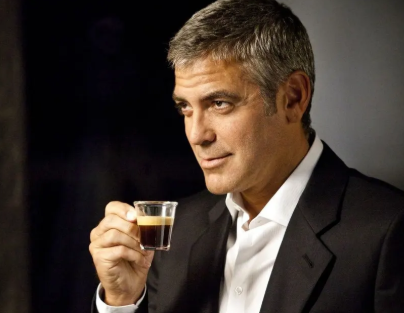One major market has largely held out against Nespresso’s global conquest: the US.
有一個主要市場在很大程度上抵擋了奈斯派索咖啡機的全球攻勢:美國。
Partly the company was too slow, beaten by Keurig’s K-Cup.
在一定程度上,奈斯派索行動太慢,被克里格公司的咖啡膠囊擊敗。
Where Nespresso aimed high, with sleek aluminium pods that emphasised quality, K-Cup’s plastic pods,
奈斯派索目標高遠,其光亮的鋁咖啡莢注重質(zhì)量,而克里格的塑料咖啡莢注重便捷。
many of which until recently were non-recyclable, emphasise convenience.
后者的很多咖啡莢直到最近都是不可回收的。
The Nespresso system also sat uneasily in a coffee culture that prefers to drink coffee in enormous cups, ideally while driving.
在一種更喜歡用大杯子喝咖啡、最好是開車時飲用的咖啡文化中,奈斯派索感到不安。
“Americans are simply not looking for an espresso first thing in the morning,” said Jim Watson, a senior beverages analyst at Rabobank in New York.
“美國人早晨的第一件事不是喝濃縮咖啡,”荷蘭合作銀行駐紐約的飲料高級分析師吉姆·沃森表示。
“One of the biggest issues Keurig and Nespresso face is not making enough ounces. This is the land of the Starbucks venti.
“克里格和奈斯派索面臨的最大問題之一是咖啡分量不足。這里是星巴克超大杯咖啡的天下。
People are used to getting a 16oz or even a 20oz coffee.”
人們習慣買一杯16盎司甚至20盎司的咖啡。”
In a bid to crack the US, Nespresso introduced a whole new range of machines – the Vertuo system, capable of delivering much larger portions.
為了打入美國市場,奈斯派索推出了一系列全新的咖啡機——Vertuo系統(tǒng),它能夠提供更大的咖啡量。
In 2015, it finally signed up Clooney to a North American deal; until then he had only been the face of the firm in the rest of the world.
2015年,奈斯派索最終和克魯尼簽訂了北美代言合同,在那之前,他只是該公司美國以外地區(qū)的代言人。
Jean-Marc Duvoisin, who was CEO until the end of last year, told me that brand awareness went up by a multiple of “five or six” when Clooney arrived.
吉恩·馬克·杜瓦辛去年年底前一直擔任奈斯派索首席執(zhí)行官。他告訴我,克魯尼成為北美市場代言人后,品牌知名度提高了“五到六倍”。
But still, to this day, in the US Nespresso exists in the long, dark shadow of the K-Cup.
但是,直至今日,在美國,奈斯派索仍處于克里格長期、黑暗的陰影中。
Although Nespresso’s rise can be told in part as a triumph of branding, it also depended on a smart approach to patenting and design.
盡管,奈斯派索的崛起在某種程度上可以說是品牌推廣取得的勝利,它也取決于在專利和設(shè)計上采取的精明策略。
One of Gaillard’s innovations was to rebalance the business towards making revenue from the capsules rather than the machines.
蓋拉德的創(chuàng)新之一是重新平衡業(yè)務(wù),使其從咖啡膠囊獲利,而不是咖啡機。

Just as Gillette have traditionally made most of their money by selling the replacement razor blades rather than the first handle,
正如吉列傳統(tǒng)上是靠銷售更換的刀片獲取大部分收入,而不是靠銷售第一個手柄一樣,
so Nespresso’s entry-level machines were sold at lower prices, in the knowledge that customers would have to keep buying the pods,
所以奈斯派索的入門級咖啡機以較低的價格出售,因為他們知道顧客將不得不繼續(xù)購買這些咖啡莢,
because only Nespresso pods worked in Nespresso machines.
因為奈斯派索咖啡機只能使用奈斯派索咖啡膠囊。
For years, that model underpinned Nespresso’s global growth.
多年來,這種模式支撐著奈斯派索在全球的增長。
But eventually, would-be competitors spotted an opportunity to exploit the niche that Nespresso had created.
但最終,潛在的競爭對手發(fā)現(xiàn)了一個機會來利用奈斯派索所創(chuàng)造的利基市場。
Nestle had ploughed a decade of investment into a system
雀巢已經(jīng)在這個咖啡系統(tǒng)上投入了十年的投資,
that got people to pay five times more for coffee at home than for traditional roast and ground: why not try to piggyback on that?
它讓人們在家里花五倍于傳統(tǒng)烤碎咖啡的錢來買咖啡:為什么不試著利用這一點呢?
In 2008, Gaillard launched the Ethical Coffee Company, which sold biodegradable capsules for Nespresso machines.
2008年,蓋拉德成立了道德咖啡公司,該公司為奈斯派索咖啡機銷售可生物降解的膠囊。
In 2010, the American firm Sara Lee started to sell capsules that worked in Nespresso machines.
2010年,美國公司莎莉集團開始銷售在奈斯派索咖啡機上使用的膠囊。



